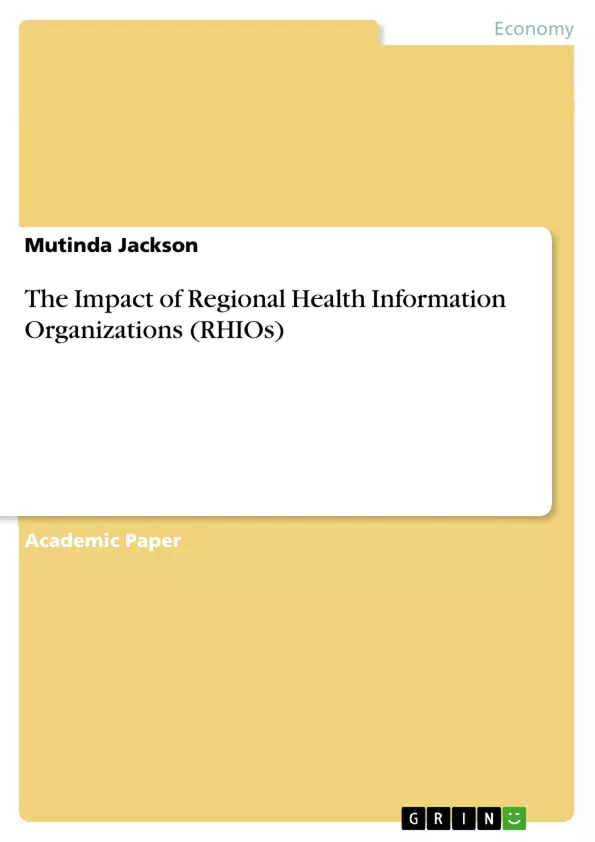An EHR (Electronic Health Records) has been extensively described as a digital-version of the paper register of the patient. Sensibly, EHRs are real-time and records that are patient-centred that produce data instantly along with making it secure to the authorised personnel (HealthIT.GOV). In other words, EHRs are inherently built around a structured digital data that includes the demographics of the patient, status of admission, physical and even diagnostic findings, discharge status, prescriptions amongst other fields.
Table of Contents
- Definition of Terms
- Electronic Health Records (EHR)
- Interoperability of Health Information Systems
- Data Standards in Healthcare
- Health Information Exchange (HIE)
- Regional Health Information Organization (RHIO)
- National Health Information Network (NHIN)
- Scholarly References on RHIOS
- The Outcomes
- How the Development of RHIOs will improve the Standard of US Healthcare
Objectives and Key Themes
This text explores the impact of Regional Health Information Organizations (RHIOs) on the US healthcare system. The author aims to analyze the development, challenges, and potential benefits of RHIOs in improving healthcare quality, efficiency, and patient care.
- The definition and significance of RHIOs in the context of health information exchange.
- The role of data standards and interoperability in facilitating effective RHIO operations.
- The potential benefits of RHIOs, including enhanced data access, improved communication and coordination among healthcare providers, and reduced costs.
- The challenges faced by RHIOs, including cost considerations, stakeholder alignment, and balancing benefits across different actors in the healthcare ecosystem.
- The comparison of RHIOs with previous initiatives and their potential to overcome past shortcomings.
Chapter Summaries
- Definition of Terms: This section defines key terms related to health information systems, including Electronic Health Records (EHRs), Interoperability, Data Standards, Health Information Exchange (HIE), and Regional Health Information Organizations (RHIOs). It provides a foundation for understanding the concepts involved in RHIOs and their impact on healthcare.
- Scholarly References on RHIOS: This section examines two scholarly articles that have investigated the outcomes of RHIOs. The first article, by Mäenpää et al. (2009), focuses on the effects of regional healthcare information systems on healthcare actions, treatment outcomes, and work practices. The second article, by Adler-Milstein et al. (2009), analyzes the progress and challenges of RHIOs in the United States.
- The Outcomes: This section summarizes the findings of the studies mentioned in the previous chapter, highlighting the positive outcomes of RHIOs, such as improved data access, enhanced communication and coordination, and timely health information.
- How the Development of RHIOs will improve the Standard of US Healthcare: This section discusses the potential of RHIOs to improve the standard of US healthcare by addressing challenges related to cost, benefits, and stakeholder alignment. It also explores the need for a clear and compelling value proposition for all involved parties to ensure successful implementation and adoption.
Keywords
Key terms and concepts explored in this text include Regional Health Information Organizations (RHIOs), Electronic Health Records (EHRs), interoperability, data standards, health information exchange, healthcare quality, efficiency, patient care, cost-effectiveness, stakeholder alignment, and benefits across different actors in the healthcare ecosystem.
- Quote paper
- Dr. Mutinda Jackson (Author), 2017, The Impact of Regional Health Information Organizations (RHIOs), Munich, GRIN Verlag, https://www.grin.com/document/437931



